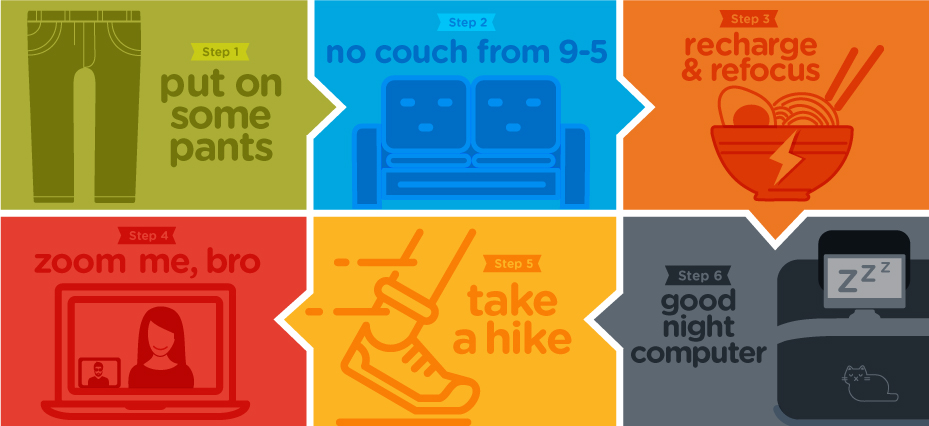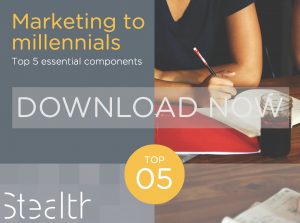There are all sorts of crazy marketing myths swirling around that might make you question advertising’s effectiveness.
And we have to admit: You can’t believe everything you see on TV or hear on the radio (or read online for that matter).
Pretty ironic coming from a full-service advertising agency, right?
But that shouldn’t keep you from advertising on TV, radio, or anywhere else. So, let’s shine a light on those lies that are hurting your company’s bottom line.

Video Production Is Just Too Darn Expensive
There was a time where we would’ve agreed. Today… well, not so much — and no, it’s not because of AI!
It really comes down to working with a full-service advertising agency (like Stealth Creative).
Here’s why.
We edit, film, and produce commercials in-house whenever possible because this cuts out the middleperson 95% of the time — and that can cut costs in a big way without sacrificing quality at all.
Plus, it turns out your business really can’t afford not to have some sort of video presence for lots of reasons.
“Some of our most memorable spots were also some of our most creative not only in terms on concepting, but working within our clients’ budget.”
-Jeff Schaeffer, Senior Video Producer

Media Buys Cost An Arm and Two Legs
Not so fast.
The truth is, some media buys cost more than others.
For example, in traditional media like television, there exists a finite number of commercial breaks. A limited number of spots to fit a specific amount of time. So yes: it tends to be a bit pricier. There’s no escaping that harsh reality — it’s the (not so) free market in action.
Conversely, digital media buys can cost just pennies per thousands of views! And radio buys can actually be more affordable than you think.
However, budget-sensitive marketing heads realize they need a media strategy if they want a real shot at success. So, what do they do to make the cost more bearable? They try doing it themselves.

We appreciate that “can do” attitude… we just want to caution you.
35% in savings is an absolutely huge number! It could mean literally thousands of dollars — or more! That’s the same as being able to broadcast your commercial or message more often.
By working with Stealth Creative’s media buying team, you can:

Identify your real target audience

Pinpoint where they’re most likely to watch, listen or read

Benefit from the hard-nosed negotiating skills of your buyers

Experience a more collaborative approach between media placement and the spots produced
“The effectiveness of the message can be more important than the out-of-pocket cost alone. Ineffective impressions reaching your audience (even if they cost next to nothing) are not valuable. Agencies have the strategic experience and tools to develop these solutions to recommend the optimal Media Mix and tactical solutions to deliver against your goals.”
-Lisa Smith, Media Director

Proofreading is Overrated
What do an erroneous letter and missing zeros have in common?
They’ve all led to losses in the millions of dollars.
That’s right. Millions.
Take for instance a Yellow Pages ad (remember those?) from 1988. Banner Travel Agency wanted to promote their exotic travel packages. Someone at Pacific Bell swapped the “x” for an “r” and changed the message completely.
Proofing Cost: $10 million
Then there’s the fiasco involving Alitalia Airlines in 2006. They wanted to promote flights to Cyprus for $3,900. What they actually promoted was flights for $39. Who could pass that deal up? Answer: no one, which led to a nosedive in profitability.
Proofing Cost: $7 million
So, yes. Details matter quite a bit. And when you hire an agency, every piece of work gets read by multiple people before you lay eyes on it — proof that proofreading is worth it.
“Few things can sour your audience’s perception faster than an obvious typo. It makes them question your company’s professionalism.”
-Jeff Ryals, Creative Director

Your Business Should Be On Every Social Media Platform Ever
We won’t dispute the effectiveness of social media. That’s why Stealth Creative has a team of social media specialists!
Sure, your business could create a {insert newest social media platform here} profile. But do you really need to?
Let’s think about it, shall we?

Time:
The more platforms you’re on, the more:
• Content you need to create
• Posts you need to schedule
• Comments you’ll need to monitor

Commitment:
Creating a profile implies you’re going to be active and engaged. If you’re not up to the challenge, your image will potentially look unprofessional.

Relevancy:
A lawn service company should focus their efforts on Nextdoor instead of LinkedIn.
“Now more than ever, it’s important to be where your audience is. Social media is a very saturated place, so you want to make sure you stand out against the competition with content that your target market will resonate with. The more focused you are on the profiles you’re utilizing, the higher the likely quality of the content. Don’t spread yourself too thin – especially if your effort is being used on a platform your audience doesn’t frequent!”
-Kirsten Hackett, Social Media Director

My Company is Too Small to Hire an Agency
This is the myth we want to banish more than any other.
Why? Because in business, as in life, it’s not where you start but where you finish.
Let’s face it: Most companies aren’t an overnight success. They spend months, maybe years, building an audience and carving out a niche, slow but steady.
Then, whether through a website redesign that emphasizes user experience, a breakthrough idea for a commercial or one savvy media strategy, they captured the market’s attention — and odds are an advertising agency helped somehow.
“Smart, strategic marketing can be the great equalizer — and it’s not reserved for household brands. If you’re hungry for growth, it can only help to get input from people whose career is helping businesses become more successful.”
-Dan O’Saben, Owner
It’s a Fact: We’re Ready to Market YOUR Company
And Stealth’s advertising case studies prove that we can make a difference for clients.

Brian Reinhardt
Brian Reinhardt is a Senior Copywriter at Stealth Creative whose first unpublished story was penned at the age of eight. Yes, it involved hoverboards, lasers and robots. His days are filled with researching, content creation and SEO strategy. His nights are spent with family, reading and managing too many fantasy sports teams. Nine is his favorite number.






